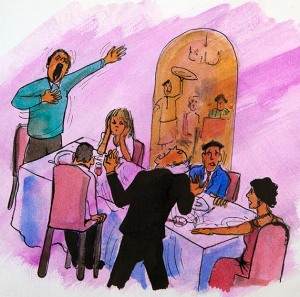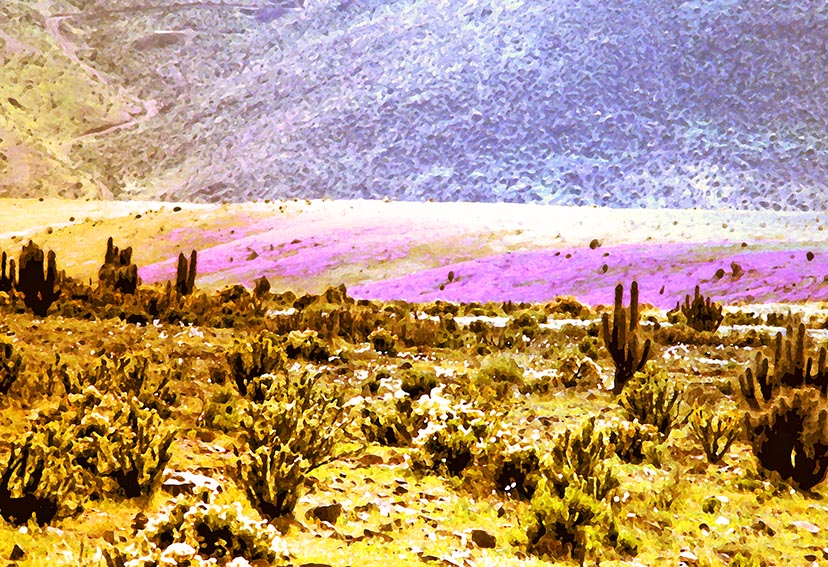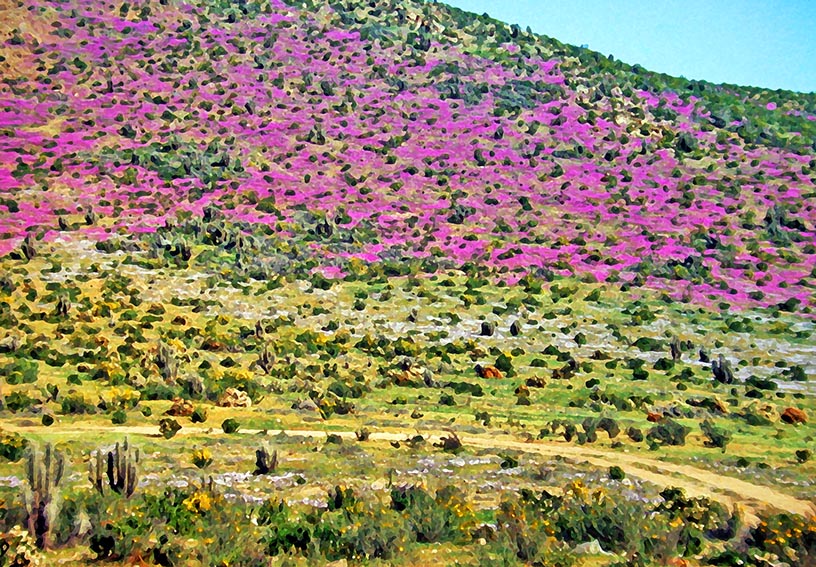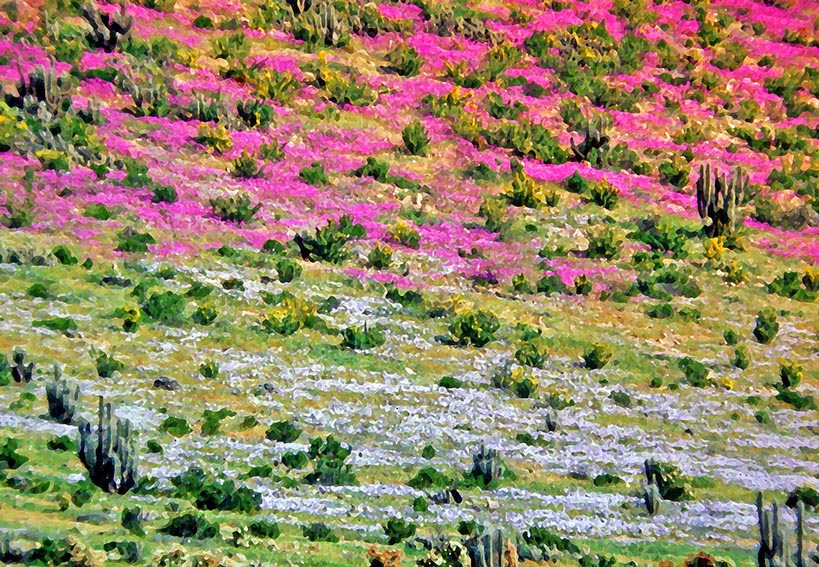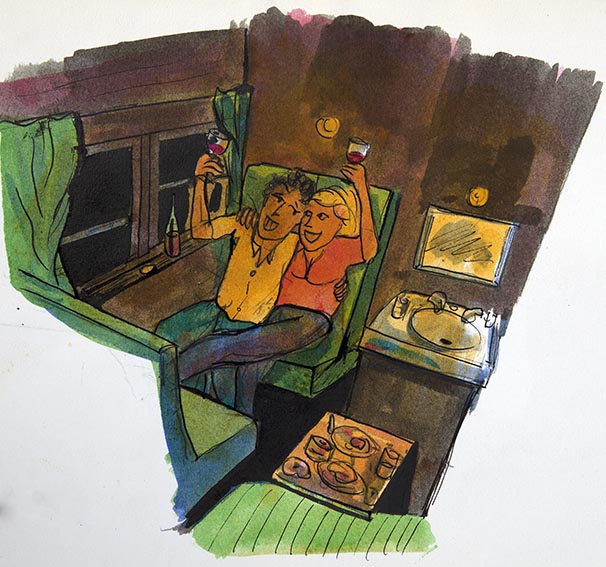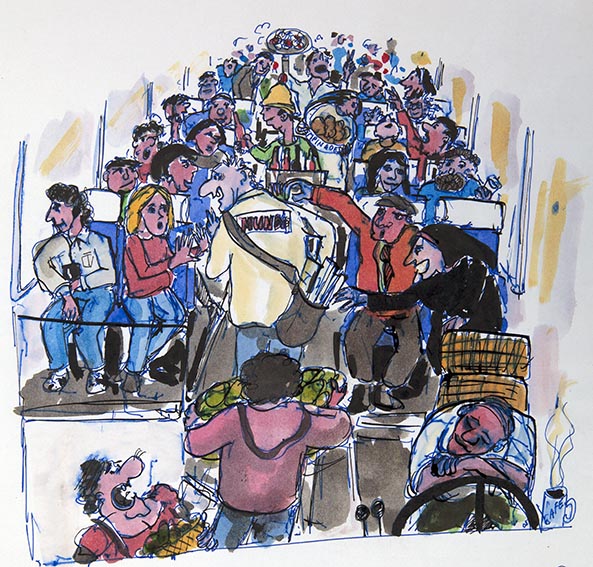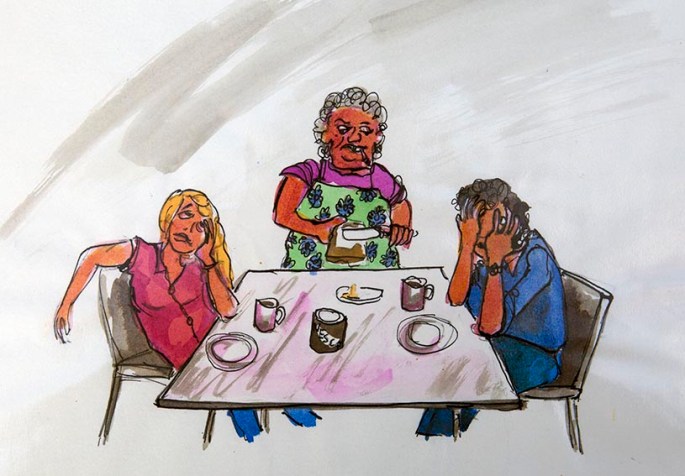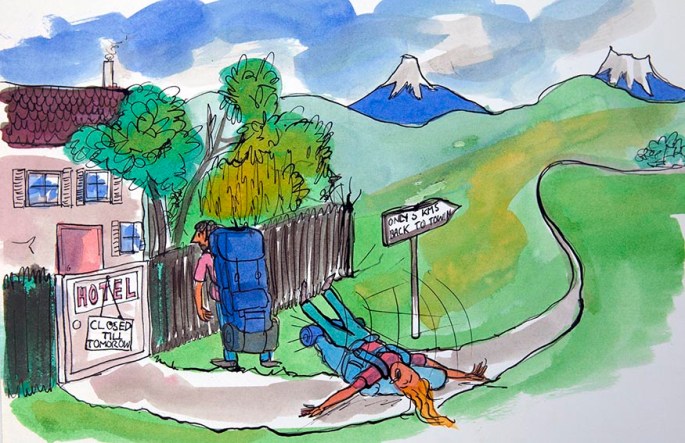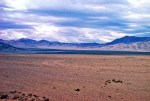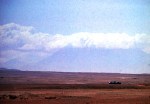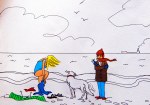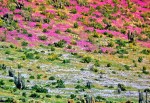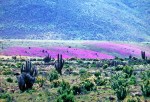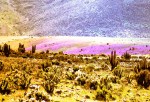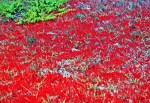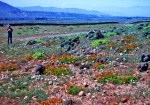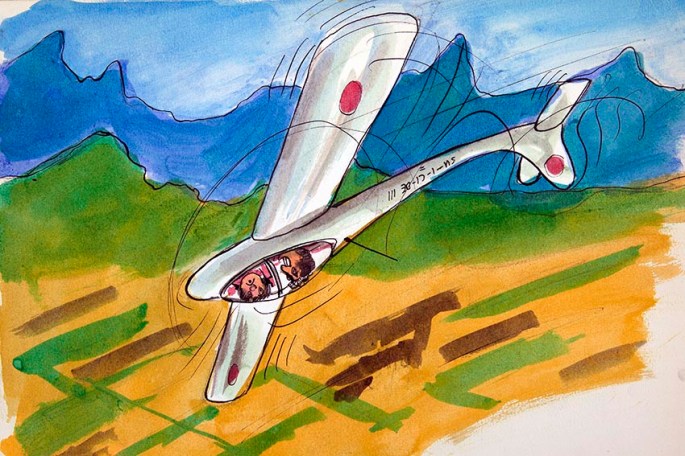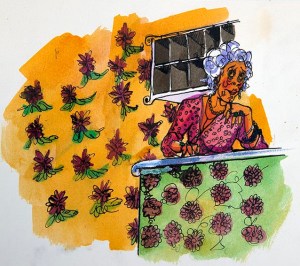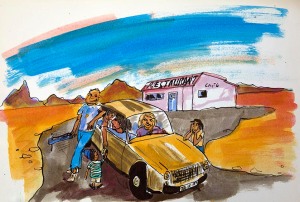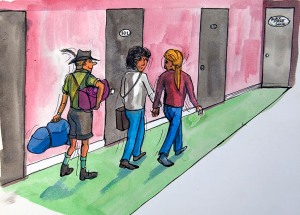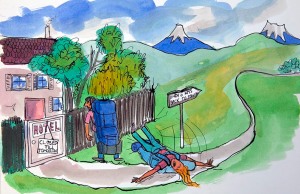28
A few hours following our brush with the youthful vigilantes our car broke down. The good news was that we had only just passed by a small town so the walk back for assistance wouldn’t be too long – the bad news, was that it was a Sunday and we didn’t have high expectations of finding a mechanic who would be working. As it happened, our ballet friend spoke good Spanish so Dido sent the two of us off back to town on foot while she stayed to mind the car.
The walk back to the town, including a fruitless hunt for a mechanic, took us around an hour I guess, and we were both in low spirits as we began the traipse back to Dido with the bad news. Our despair turned to puzzlement however as soon as our car came back into view. At first, we both thought that the shimmering heat-haze rising from the distant tarmac was playing tricks with our eyes: We thought we could see our car with its bonnet raised, and several motorcycles with flashing blue lights parked behind it; and then as our pace instinctively quickened and we got nearer, we thought we could make out two policemen ostentatiously directing traffic passed our car; and then (by now we had broken into a jog) we thought we could make out a line of traffic cones placed around our car. And as we got closer, and realised that our eyes were not deceiving us, our puzzlement was increased by the fact, that of Dido, there was absolutely not a trace…
When we reached the car, we passed by three parked police motorcycles, and approached the fist of the two cops directing the traffic. Our ballet friend asked him what had happened and he merely gestured with his head towards the front of the car and as we walked round we at last understood why Dido had apparently disappeared: In what remains one of the most surreal scenes of all our many weeks in Chile (which the drawing below barely does justice to) she was in fact immersed beneath the bonnet, leaning into the engine, together with a third policeman on he left and a man in bluejeans on her right.
What had apparently occurred was that twenty minutes after we left for the town, the three motorcycle cops appeared on the scene. After Dido – doing her “best blonde damsel in distress routine” – explained the problem one of them took a look under the bonnet and diagnosed a loose alternator belt. A few minutes later they hailed down a passing truck belonging to a local mechanic. Although he protested that it was his day off and he was on his way to his mother’s for Sunday lunch they insisted that he fix our car first. He grumpily confirmed that it was the alternator belt, but that without the kit from his garage he would need two spare pairs of hands if he was to fix the problem in situ.
It seemed that, in common with their Guardia Civil Traffico cousins in Spain, the Chilean carabineros had an ethos that cars broken down on the highway must be got moving again at all costs. Hence, Dido coerced into immersing herself in car engine together with a policeman, holding on with all their combined might to a clamp, while the mechanic tightened the belt sufficiently for us to make it back to Santiago.
After many weeks in Chile we remained uncomfortable around the carabineros, and so it took a while for the fact to sink in that we owed those three cops an enormous debt of gratitude…
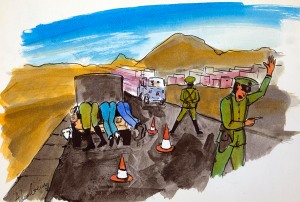
29
We met several wonderful people during our stay in Chile, and made some enduring friendships. Perhaps the most exotic and exciting person we met was Georgina Gubbins, an English-born woman with a truly international upbringing, who had ended up with Chile as her’s and her family’s primary home. Craftswoman, artist, author and beautiful mother of three equally beautiful daughters Georgina was (and is still) one of those energetic people whose bristling enthusiasm is truly infectious, so that she has this knack of getting her friends to do things they wouldn’t normally consider in a month of Sundays.
I can’t quite recall what prompted Georgina to suggest we try going up in a glider over Santiago – bizarrely it might have had something to do with me telling her about the acute flying phobia I was suffering from at the time – but I can honestly say it was an activity which neither of us had ever before contemplated. Anyhow, one afternoon towards the end our trip, somehow, and before we knew what was going on, she had driven us to a Santiago gliding club and convinced us both to “have a go” in a powerless aircraft.
I should point out at this point, before readers get too alarmed that these were two-seater gliders, and that we were in the hands of experienced pilots. Nevertheless, as we were towed thousands of feet up into the sky by a single-engine biplane I’ve rarely felt a greater thrill.
Like most people who had only ever viewed them from terra firma I had always had two firm conceptions about gliders and gliding, both of which were dispelled the moment we were released from the towrope. Gliding is neither silent nor smooth; quite the opposite in fact! The air whistles and howls around the cockpit canopy, and the wind buffets and jolts the wings and fuselage with each and every movement of the aircraft for the entirety of the flight . So much so, that my pilot was forced to yelling at me when he wanted to point out all the gob-smacking sights and vistas beneath and around us.
Most of the flight was over Santiago’s sprawling eastern suburbs, but we also skimmed past the western edge of the neighboring Andean wall of snow-capped mountains, the tallest of which in the very far Argentinian distance was the mighty Aconcagua. Towards the end of the mini-voyage we flew over a large compound that comprised the dwelling of the retired dictator, Augosto Pinochet, and shortly after that the pilot gave me control of the glider. The picture below describes what happened next – or at least how it seemed to me at the time, when in my over-excited state I put the glider into a virtual role. Thankfully, my pilot was unfazed by my surprise maneuver and instantly regained control to land us safely back at the gliding club.
My amateur aerobatics notwithstanding, the brief glide over the outskirts of Santiago remains a vivid and treasured memory from a trip already rich in awe-inspiring memories. Thank you Georgina!
(Readers interested in learning more about the remarkable Georgina Gubbins can visit her website here: http://www.georginagubbins.cl/)

30
So mortified was I from my disastrous jet-lag experience at the start of the trip at the Italian restaurant in Antofagasta, I still had misgivings about entering another such establishment some ten weeks later. However, we’d reached that stage again where we were keen for an alternative to Chilean cooking and thus decided to chance our palettes on a highly-recommended uptown tratoria.
As things turned out the food was indeed excellent and I managed to avoid losing consciousness for the entire meal. But even if I had suffered a freak recurrence of that temporary narcolepsy I doubt very much that I would have actually fallen asleep at this particular restaurant; for this particular restaurant was “blessed” with the presence of a singing maitre d. And the singing maitre d didn’t merely sing the occasional refrain from a popular tune; he didn’t restrict himself to the odd verse from o sole mio; this was no mere gondola crooner; no, this guy fancied himself as the real, full-on, operatic deal.
The only time he stopped singing was when he had to talk to his guests, and even then he didn’t so much talk as warble in a form of recitative – whether recommending a wine or pointing out the way to the toilets.
At first, both the novelty of the experience, and the fact he did have a decent enough little tenor voice meant that we didn’t find the singing too intrusive upon our dining – which was after all, our primary reason for being at the tratoria. But after about half-an-hour it began to irk, and then it began to grate, until by the time he warbled to us the deserts of the day we were ready to throttle him – but then something much better happened.
A diner at a neighbouring table, with a far bigger and better tenor voice decided to sing back at the maitre d. The maitre d in turn, not getting the message, and not knowing when he was beaten sang back – louder! This then descended into an all out competition, culminating in the two men not so much singing at each other, but actually screaming. It ended eventually- much to the relief of everyone in the restaurant – when the maitre d’s voice finally cracked, breaking down into a pathetic croak…
